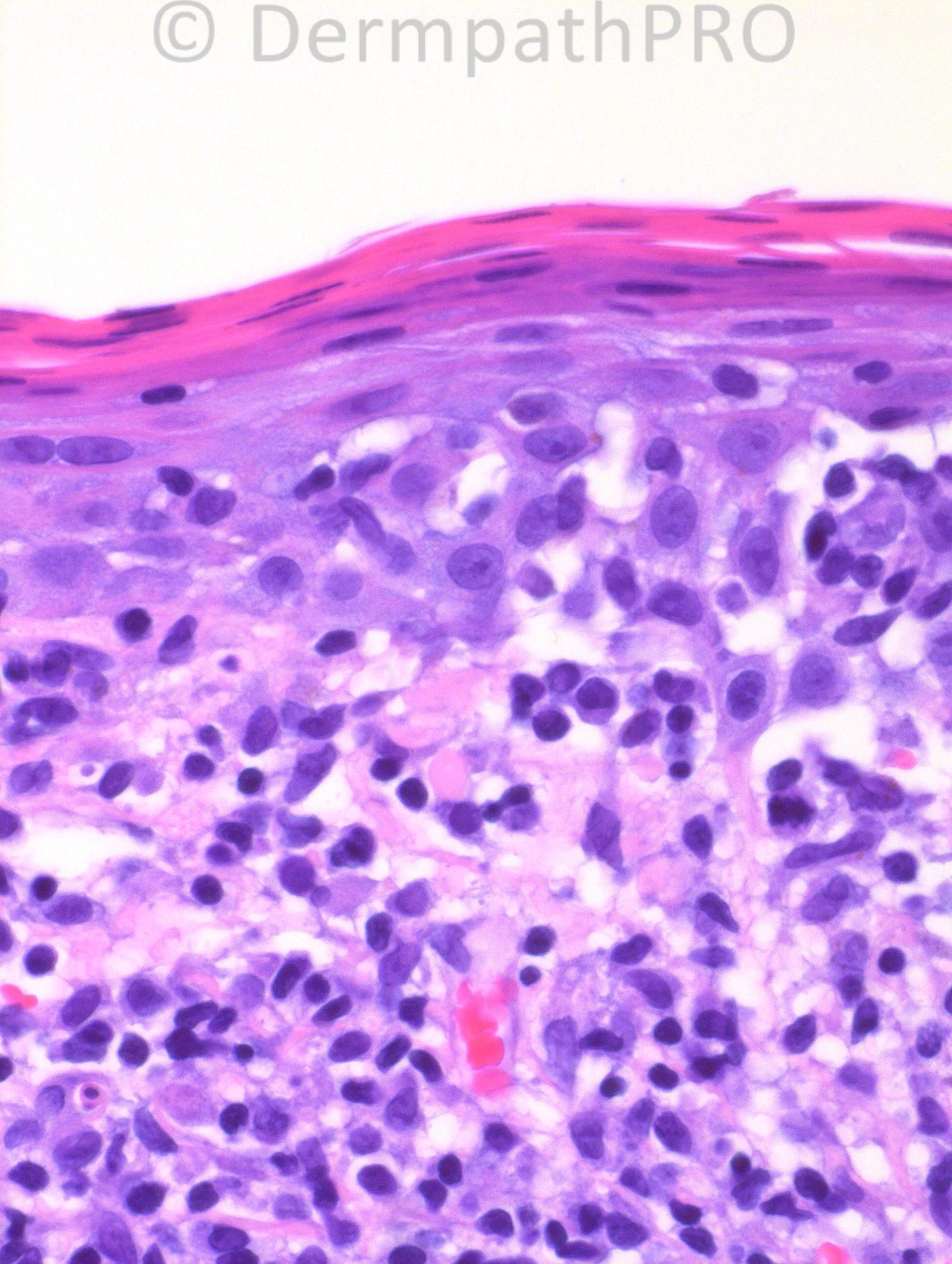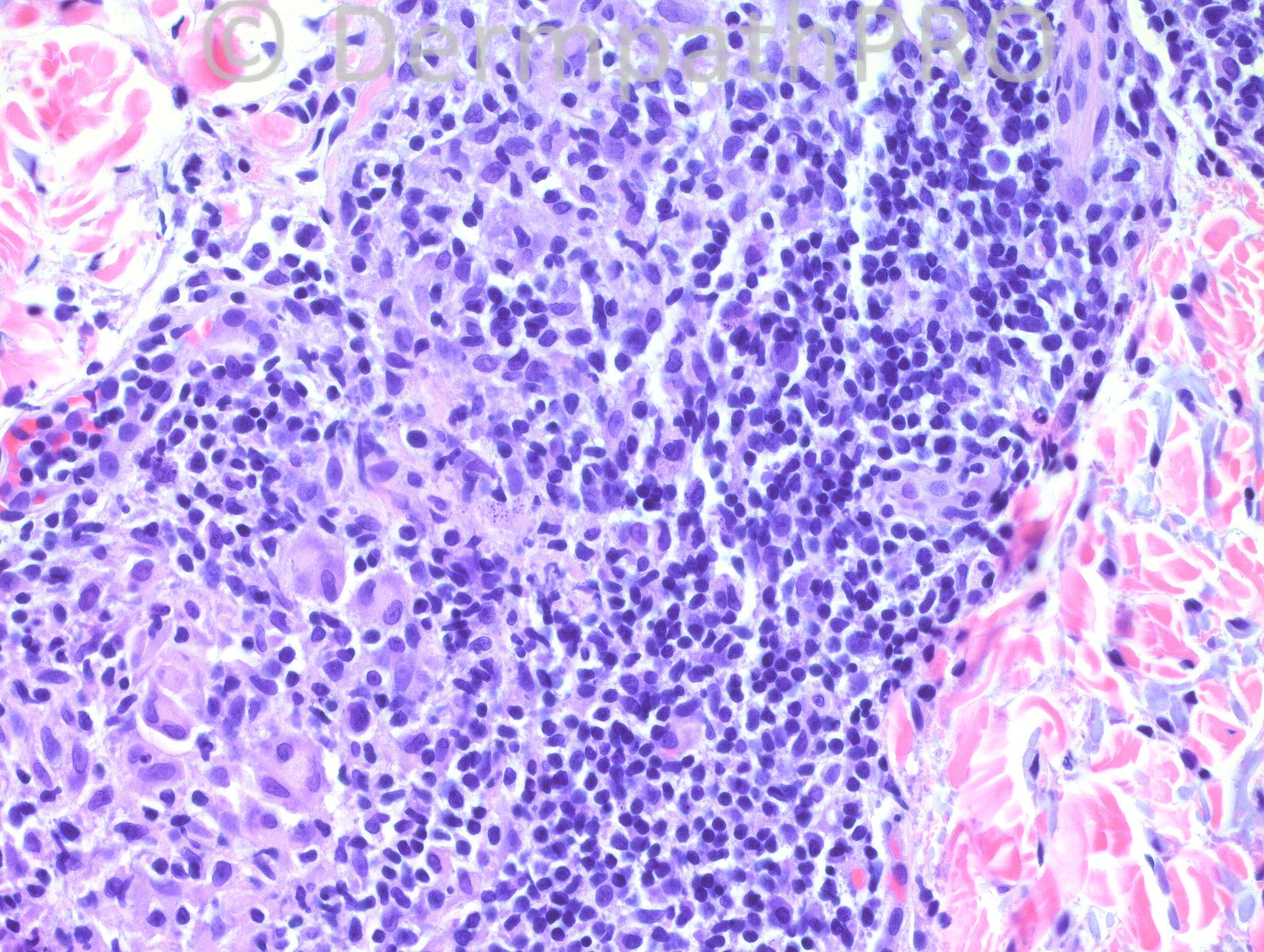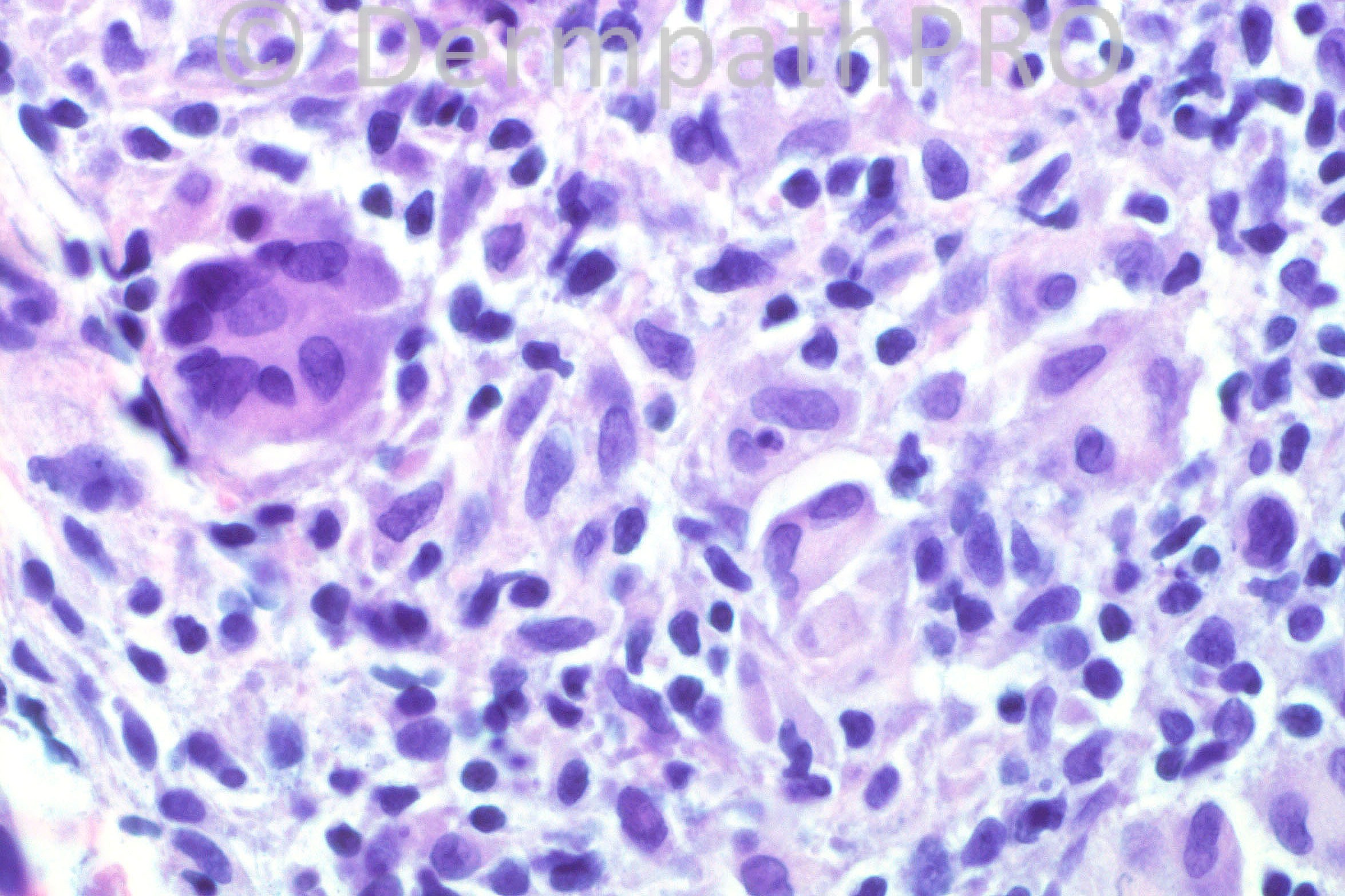Case Number : Case 696 - 14 Feb Posted By: Guest
Please read the clinical history and view the images by clicking on them before you proffer your diagnosis.
Submitted Date :
73-year-old male with a history of recurring granulomatous and necrotic lesions of uncertain etiology. A thigh biopsy from 2008 was read as “lichenoid and granulomatous dermatitis with eosinophils,†and other biopsies (from arm, trunk, and thigh) from 2009 as spongiotic dermatitis with eosinophils. On 1/11/2013, two biopsies were performed: one from the back, which was a “mature†lesion, and another from the right arm, which was a “new†lesion. The one that is shown here is the new lesion from the arm. The “mature†lesion showed ulceration, and had a more dense lymphocytic and histiocytic proliferation.
Case posted by Dr. Hafeez Diwan
Case posted by Dr. Hafeez Diwan





User Feedback